HOT TIPS
You'll Be Glad To Know!
By Alice Osborne
You hear me say it a lot: "If things are easy to do, we're more inclined to do them. And if we do things right the first time, we're more inclined to do them again." And that's the theme to this article—hot tips that can make your kitchen work easier and your results pleasing. You may already be doing some of these, but I'm willing to bet there are at least one or two little gems here you haven't thought of before:
When I need diced cooked tomatoes and all I have on hand is stewed or whole tomatoes, I use my kitchen shears and cut them into small pieces, right in the can. No muss, no fuss.
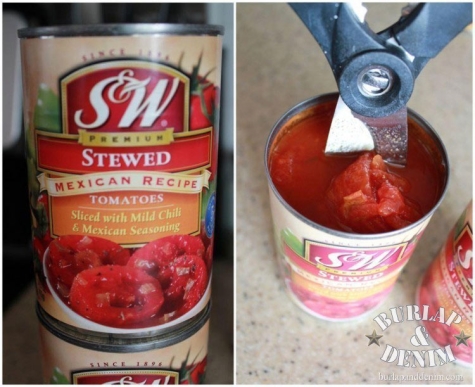
I buy parchment paper in the roll to save money. After I get it home I cut all the paper to fit the size of my cookie sheets, then I place another cookie sheet on top of the cut stack and store it this way. America's Test Kitchen pros came up with this as an easy way to avoid curling paper when time to bake.
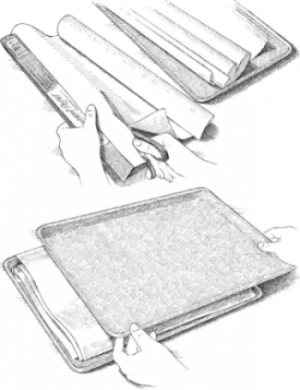
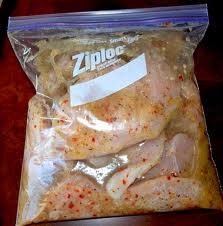 Save time and jazz up the flavor of chicken breasts by marinating them in the freezer before breading them. Just place the chicken in sandwich-sized freezer bags with either a purchased or homemade marinade. Freeze several breasts, then pull the bags from the freezer as you need them. Thaw the chicken in the refrigerator, coat with bread crumbs, and fry or bake per the recipe you're using.
Save time and jazz up the flavor of chicken breasts by marinating them in the freezer before breading them. Just place the chicken in sandwich-sized freezer bags with either a purchased or homemade marinade. Freeze several breasts, then pull the bags from the freezer as you need them. Thaw the chicken in the refrigerator, coat with bread crumbs, and fry or bake per the recipe you're using.
Unless you are desperate for a ripe avocado immediately, avoid buying soft ones. They've likely been squeezed by many shoppers and thus bruised into ripeness rather than naturally ripened. And if a store avocado feels rubbery, like a hard rubber ball, don't buy it. The avocado was picked before it was fully mature, and the oil content—which is what gives an avocado its delicious flavor—is not what it should be. Finally, don't refrigerate an avocado before it has finished ripening. It will never ripen further once it's been chilled.
Never refrigerate a fresh tomato. They are a tropical fruit and chilling them causes a rapid breakdown of texture, flavor, resistance to mold, and destruction of vitamin C. Room temperature is idea for tomatoes. Avoid direct sunlight or temperatures over 75 degrees F, since this tends to make tomatoes flavorless and mushy.
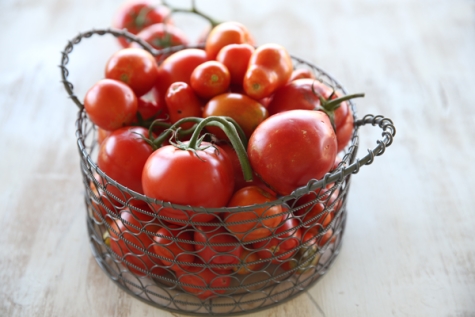
Nut purists say to buy walnuts in the shell—their flavor and freshness is superior to shelled and bagged nuts. BUT, who has time to shell nuts? I wanna get baking. So I keep them in air-tight containers in the freezer and they never have a chance to go rancid. And consider toasting them—the mellow flavor of walnuts is enhanced and you'll eliminate the discoloration that sometimes occurs when they're combined with milk products. It also keeps them crispy. To toast, spread them out in a shallow pan and bake in a 350 degree F oven for about 15 minutes. Watch closely though, nuts are easy to scorch.
If a recipe calls for beaten egg whites, and you want the highest volume possible, leave the whole egg in its shell at room temperature for a day, or better, two days. It will not go bad—in its shell it is completely sterile.
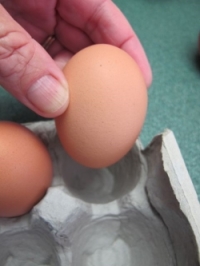 More on eggs: Refrigerate them in their carton with the large end up and they'll last at least a month. In fact, the California Egg Advisory Board says that if you store them this way for a few days before hard-boiling, they'll be easier to peel. That's because a little bit of air is taken in through the pores of the egg and forms an isolating layer between the shell membranes.
More on eggs: Refrigerate them in their carton with the large end up and they'll last at least a month. In fact, the California Egg Advisory Board says that if you store them this way for a few days before hard-boiling, they'll be easier to peel. That's because a little bit of air is taken in through the pores of the egg and forms an isolating layer between the shell membranes.
And still more on eggs: When hard boiling eggs, be sure to use moderate temperatures—heat that's too high will turn the whites tough and rubbery and the yolks greenish. The green is from iron and sulfur compounds that form when the egg is overcooked. While it won't hurt you, it's just not an egg at its beautiful best.
For perfectly cooked rice, be aware of the distinction between pearl or medium-grain rice and the long-grain varieties. Unless you think gummy is yummy, the ideal proportion of water to rice for pearl or medium-grain white rice is one cup rice to one and one-half cups water and one teaspoon salt. One cup of long-grain rice will use two cups of water. Once the rice has simmered in a covered pan for about 20 minutes it should rest off the heat for another 10 minutes or so.
More on rice: Brown rice needs 2 cups of water for each cup of rice. Simmer, covered, for about one hour. You'll know it's done because you can mash a grain with the back of a spoon, and have the same shape as the uncooked grain, only puffed and swollen. When overcooked, the rice grain changes shape and not only becomes pasty but also loses its flavor.
If you want to add dried fruit to your fruit filling when making a pie, consider using less thickener than you otherwise might. Dried fruit absorbs juice like a sponge, reducing the need for a thickening agent. There are no hard and fast rules about this; just use your judgment. However, if a recipe directs you to soak the dried fruit in liquid ahead of time, then it will absorb less liquid during baking. Some of the best fruits to add to apple or pear pies are raisins, dried tart or sweet cherries, dried and sweetened cranberries (also known as Craisins), dried figs, and prunes.
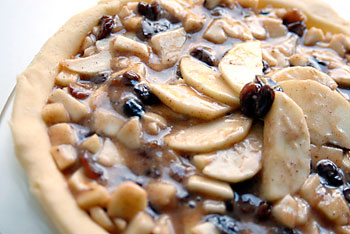
You can freeze pie dough very successfully. Simply wrap it in plastic as usual, then slip it into a plastic food storage bag. The day before you plan to roll the pastry, transfer it to the refrigerator; it will be thawed and ready to roll in the morning. It's best to thaw the dough in the refrigerator, rather than at room temperature, because you'll end up with less moisture on the surface, and it thaws more evenly this way as well. Pie dough will stay frozen, in good condition, for at least a month.
More pie stuff: What's best: regular all-purpose or unbleached all-purpose flour? All-purpose flour is lower in gluten-forming proteins than unbleached all-purpose flour. And gluten is what gives dough its stretchability—something you don't want in a tender pie crust. So here's a trick if you're using unbleached flour: For every 1 cup of flour you use, replace 1 1/2 tablespoons of the flour with an equal amount of cornstarch. Just mix it right in with the flour. Cornstarch will counter unbleached flour's tendency to form gluten strands.
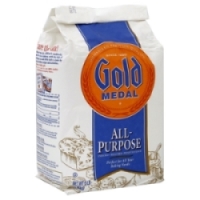
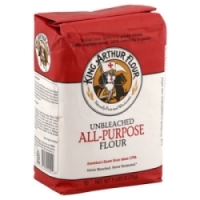
- www.burlapanddenim.com
- www.americastestkitchen.com
- www.boomerbrief.com
- www.ourbestbites.com
- www.homefront.prudentliving.com
- www.vegalicious.com
- www.meijer.com
- www.bakeat350.blogspot.com

Alice Osborne
Weekly Newsletter Contributer since 2006

